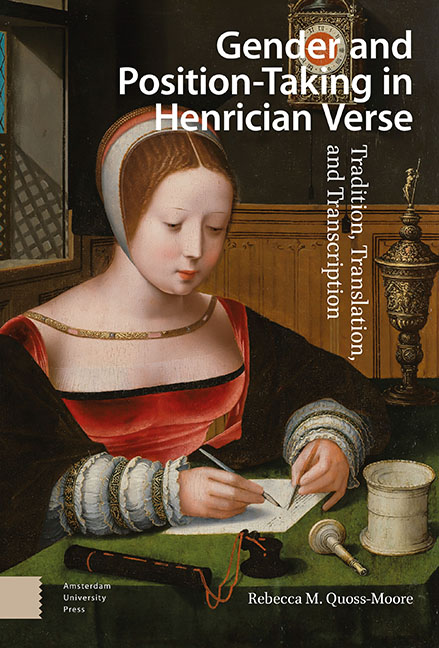Book contents
- Frontmatter
- Table of Contents
- Acknowledgements
- Introduction
- 1 Early Verse Position-Taking in the Henrician Court
- 2 Traditions of Resistance and Verse Position-Taking
- 3 Translation and the Position-Taking Verse Tradition
- 4 Men’s and Women’s Approaches to Translation and Authority in the Late Henrician Court
- 5 Transcription as Translation: Writing the Language of Manuscript Poetry
- 6 Resistance and Unity in the Douglas-Howard Exchange
- Conclusion
- Bibliography
- Index
3 - Translation and the Position-Taking Verse Tradition
Published online by Cambridge University Press: 13 February 2024
- Frontmatter
- Table of Contents
- Acknowledgements
- Introduction
- 1 Early Verse Position-Taking in the Henrician Court
- 2 Traditions of Resistance and Verse Position-Taking
- 3 Translation and the Position-Taking Verse Tradition
- 4 Men’s and Women’s Approaches to Translation and Authority in the Late Henrician Court
- 5 Transcription as Translation: Writing the Language of Manuscript Poetry
- 6 Resistance and Unity in the Douglas-Howard Exchange
- Conclusion
- Bibliography
- Index
Summary
Abstract: This chapter focuses on translation in the courtly love lyric tradition, bridging the intersection of translation and engagement with tradition as position-taking strategies and emphasizing the importance of understanding the manuscript as a space shared by courtier poets of all genders. The chapter contextualizes the uses of translation as a genre that codes emotions and positions; makes them socially acceptable, expressible, and exchangeable; and lends these positions legitimacy through an attempt at universalizing the poets’ experiences. As the most prominent discourse, translation of love poetry marks an important access point; as only one of the available discourses, the practice can be used to explore what elements transfer between strategies and how each kind of poetic work influences others.
Keywords: Tudor translation; courtly love lyric; Devonshire Manuscript; Tottel’s Miscellany; Henry Howard; Thomas Wyatt
Translation has been so often and so thoroughly understood as a sort of code for courtiers that a section on the practice may seem superfluous or to imply that I aim here only to extend the established critical practice to new works. Certainly, this chapter partly establishes the current conversation about translation as a jumping-off point for understanding other courtly verse. I want also, though, to draw attention to how establishing as ‘conventional’ this reading of translation work as coded can obscure some important facts about the practices of the creation of the verse. This framework may by now have become so accepted that our interpretation of it has become traditional and even conservative: we see the same tropes, and so we miss the resistant and even shocking nature of the content. In practice, writers at court were able to spend years using translation as coded commentary on contemporary events without ever becoming repetitive in that commentary. In our efforts to restore reading and writing networks, we can try to restore the immediacy and urgency of the work this kind of verse was doing.
In fact, the tradition for the practice was important in its contemporary setting, rather than devaluing the technique through any sense of tired repetition. Position-taking verse in the Henrician court gained energy by positioning itself as and within a specific poetic technique and tradition.
- Type
- Chapter
- Information
- Gender and Position-Taking in Henrician VerseTradition, Translation, and Transcription, pp. 83 - 112Publisher: Amsterdam University PressPrint publication year: 2023



